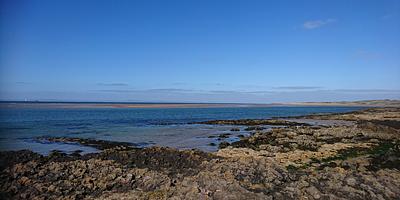
ROCKY SHORES
Rocky shores occur on any hard substrate in the 'intertidal' section of the coast - areas submerged and exposed by the tide twice a day.
For marine organisms, whose bodies are designed for existence in saltwater, exposure to terrestrial conditions is a stressful time. Species are therefore restricted to certain parts of the shore or have developed fascinating adaptions to cope in this changeable habitat.
For us, the receding tide means rocky shores can be safe and accesible places to search for sea creatures. 'Rockpooling' is a fun and rewarding activity for any nature lover!
Rocky shores are home to a wide variety of life including economically important species of shellfish, such as the common mussel (Mytilus edulis), and algae harvested for seaweed products.
FORMATION
Outcrops of rock, boulders and even man-made structures provide hard surfaces for sessile species - organisms that fix themselves to an object - to settle and grow. Over time, more species move in to the area and the shore becomes covered in life.
The rise and fall of the tide leads to 'zonation' of species at different heights on the shore. There are typically 4 zones on a rocky shore; the Low shore, Middle shore, Upper shore and Splash zone. Each zone contains a different community of organisms adapted to the levels of air, freshwater, wave action, wind and heat found there. Species more tolerant of terrestrial conditions occur higher up the shore whilst those less able to cope are restricted to lower down. The favourable condtions of the Low shore means it supports a higher diversity of life than other zones.
Whilst the tide is out, rockpools, crevices and the undersides of boulders provide respite from harsh terrestrial conditions, providing species typically associated with the low shore the opportunity to exist further up the shore. These 'microhabitats' lead to a patchwork of species assemblages within the zones, further increasing diversity on the shore.
If done with care, rockpooling at low tide is a great way to explore the shore and get up close to its residents.
Click here to see our species spotter sheet to help identify some of the common species and wach the video below for a guide on best rockpooling practice.
When submerged, the shore resembles an underwater woodland - animals swim, scuttle, and slide beneath a canopy of seaweed. Snorkelling above a rocky shore at high tide is a wonderful way to see it at its most active. The Snorkel Trail is a project developed by the Wildlife Trust that identifies some of the best snorkelling sites in the UK.
INHABITANTS:
Seaweed
Large seaweeds, also called ‘macroalgae’, provide food and shelter for a multitude of marine organisms. They are grouped into 3 colour types (browns, reds and greens) and come in a variety of shapes and sizes. For example:
- Sea lettuce (Ulva lactuca) is a broad, bright green seaweed that’s only 2 cells thick.
- Oar weed (Laminaria digitata) is a thick, branched, golden-brown species of kelp that can grow to 2m long.
- Coral weed (Corallina officinalis) is a small, bushy, bright pink seaweed with white tips.
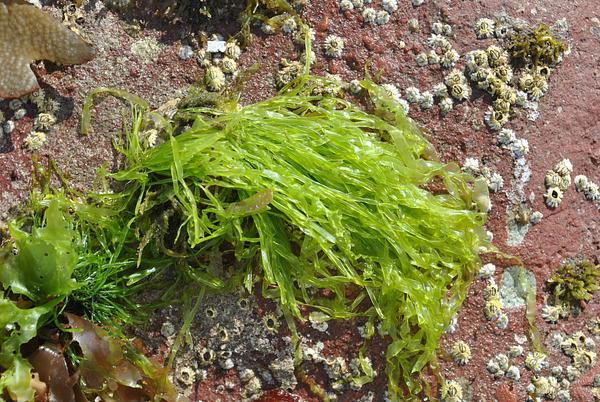
Find out more about seaweeds on our Marine Algae page.
Animals
Animals also come in lots of weird and wonderful forms and survive in different ways. There are:
- Sessile animals – species such as barnacles and oysters that spend their adult lives permanently fixed to one spot.
- Mobile animals – fast ones, like fish and crabs, and slow ones, like limpets and snails.
- Animals with simple bodies - sea squirts are blob-like creatures that feed by filtering food from the water using inhalant and exhalent siphons.
- Animals with complex bodies – the common lobster (Homarus gammarus) is a ‘decapod’, meaning they have 10 jointed limbs (limbs made up of different parts, like our own arms and legs). Watch out for their big front claws!
- Creatures that are colourful and easy to spot - beadlet anemones (Actinia equina) appear during low tide as bright red blobs of jelly stuck to the rocks.
- Animals that are camouflaged - bryozoans are colonies of tiny invertebrates forming ‘mats’ across the surface of seaweeds and rocks. In fact, sometimes they blend in so well it’s hard to tell they’re even animals at all!
Discover more about these fascinating creatures on our Wildlife page.
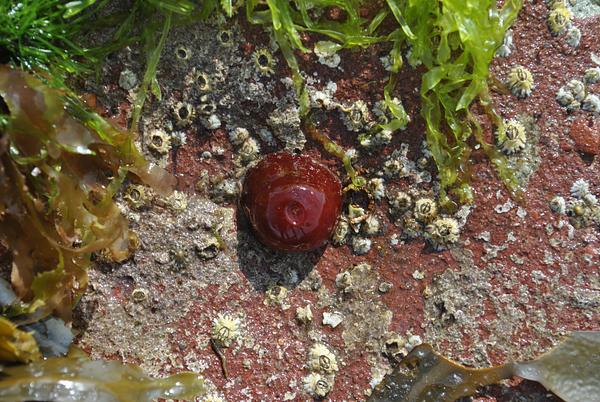
Species that can’t move out with the tide are restricted to places they are most suited to on the shore. For example, oarweed and the common starfish (Asterias rubens) can't cope being out of seawater for long so are associated with the Low shore, whilst spiral wrack (Fucus spiralis) and small periwinkle (Melarhaphe neritoides) thrive in the Upper shore.
Species have evolved some fantastic adaptations to survive out of seawater:
- Snails have an 'operculum' - a part of their body that acts as a trap door, sealing them inside their shells to reduce the risk of their soft bodies drying out.
- Some seaweeds cover their fronds in a mucus that acts as a sunscreen, whilst others curl up their edges to prevent waterloss.
- Limpets create a 'home scar' - a groove in the rock they position themselves in which allows them to seal themselves tightly against the rock, protecting them from the elements.
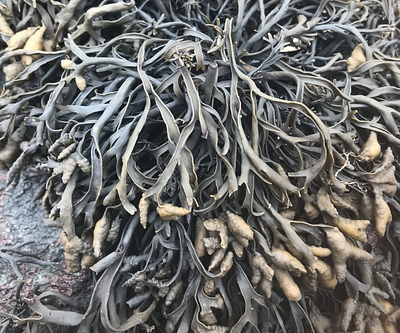
The Splash zone, where the only influence of the sea is the salty spray that gets whipped up by the wind, is dominated by lichens. Lichens are a mixture of organisms, commonly fungi and algae, working together as a team to survive. Black tar lichen (Verrucaria maura) is a regularly occurring species on the coast. Sometimes it forms a black band above the high tide that can be mistaken as oil.
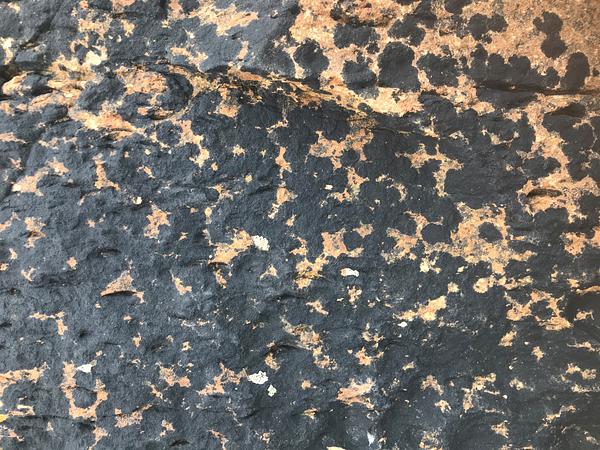
Shore birds also make use of the rocky shore environment at low tide. Turnstones (Arenaria interpres) and purple sandpipers (Calidris martima) prey on invertebrates around the water’s edge, whilst oyster catchers (Haematopus ostralegus) hammer molluscs off the rock with their powerful beaks. The long-legged grey heron (Ardea cinerea) can also be seen standing on the water's edge or stealthily stalking its prey through the shallows.
LOCASLISED THREATS
In addition to the large-scale threats facing the marine environment, rocky shores are at risk from the following:
- Human pollution - agricultural and human runoff adding harmful chemicals and excess nutrients to the environment.
- Disturbance - Accidental damage from fishing nets, lobster pots, and leisure activities on the shore (e.g. rockpooling, collecting snails).
- Coastal squeeze – As sea levels rise as a results of climate change, species associated with the higher parts of the shore are being forced further up the shore or out of the habitat entirely as suitable conditions disappear.
- Non-native species – species introduced from other countries have the ability to outcompete native species. Rocky shores act as convenient steppingstones for non-natives to migrate along our coasts and spread across the country. An example of a non-native species of particular concern on our rocky shores is wireweed (Sargassum muticum) – a seaweed from the Pacific that was first introduced to the UK’s South coast in the 1970s which has since spread up the West and East side of the country.
